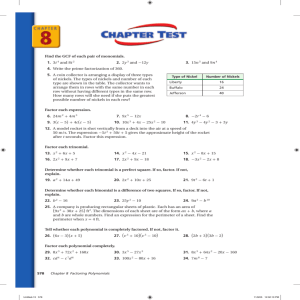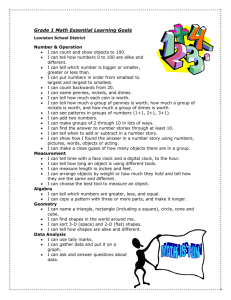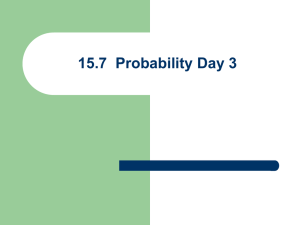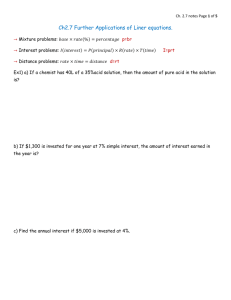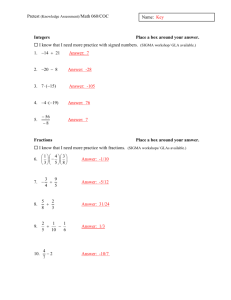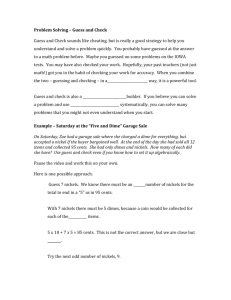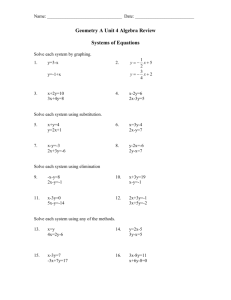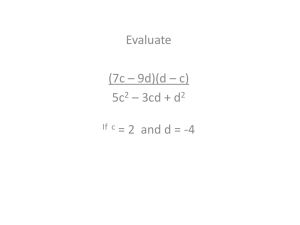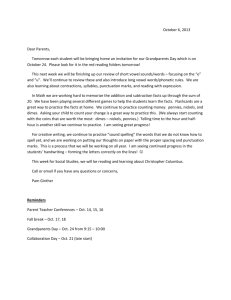BLM - Understanding Isotopes-Investigation
advertisement
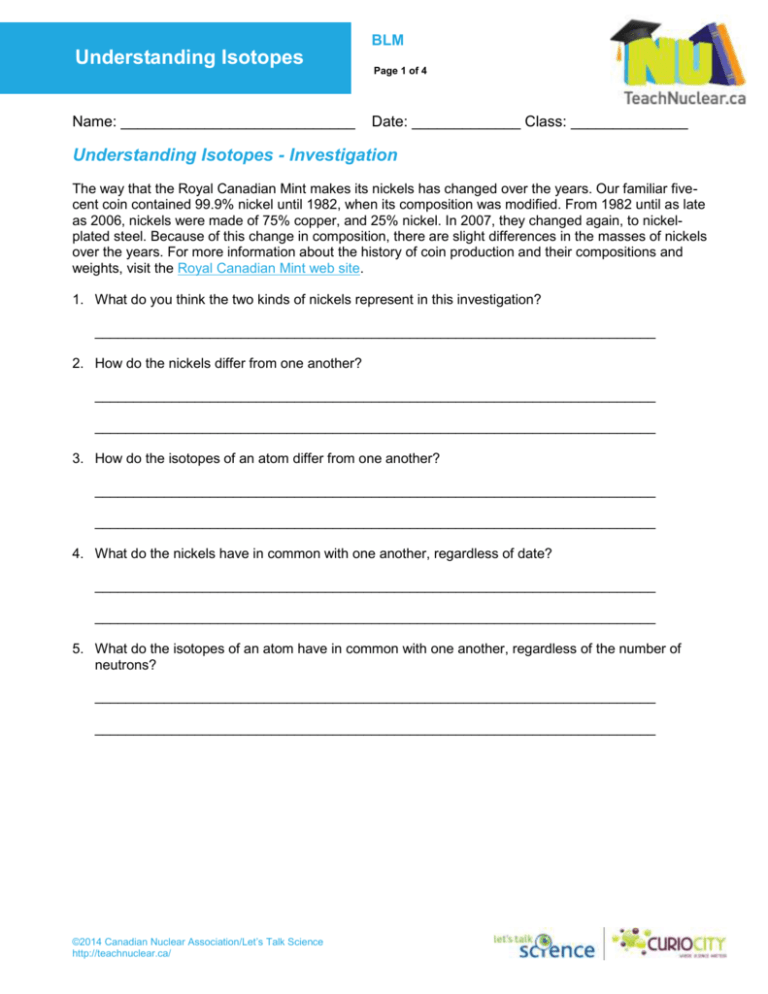
BLM Understanding Isotopes Name: ____________________________ Page 1 of 4 Date: _____________ Class: ______________ Understanding Isotopes - Investigation The way that the Royal Canadian Mint makes its nickels has changed over the years. Our familiar fivecent coin contained 99.9% nickel until 1982, when its composition was modified. From 1982 until as late as 2006, nickels were made of 75% copper, and 25% nickel. In 2007, they changed again, to nickelplated steel. Because of this change in composition, there are slight differences in the masses of nickels over the years. For more information about the history of coin production and their compositions and weights, visit the Royal Canadian Mint web site. 1. What do you think the two kinds of nickels represent in this investigation? _________________________________________________________________________ 2. How do the nickels differ from one another? _________________________________________________________________________ _________________________________________________________________________ 3. How do the isotopes of an atom differ from one another? _________________________________________________________________________ _________________________________________________________________________ 4. What do the nickels have in common with one another, regardless of date? _________________________________________________________________________ _________________________________________________________________________ 5. What do the isotopes of an atom have in common with one another, regardless of the number of neutrons? _________________________________________________________________________ _________________________________________________________________________ ©2014 Canadian Nuclear Association/Let’s Talk Science http://teachnuclear.ca/ BLM Understanding Isotopes Name: ____________________________ Page 2 of 4 Date: _____________ Class: ______________ Investigation – Part A 1. Use the electronic balance to determine the mass of each of the seven old (2006 or earlier) nickels and the mass of each of the seven new (2007 or newer) nickels. Record the results in a chart below. Calculate and record the average mass for both the old and new nickels. Average mass old nickels: ________ Average mass new nickels: ________ 2. A) Based on the averages for old and new nickels, estimate the combined mass of six old nickels and four new nickels. Record your estimate below. B) Divide the estimated number above by 10 to determine the estimated weighted average mass of the nickels in this sample. Show your calculation below. C) Use the electronic balance to determine the actual mass of six old nickels and four new nickels. Record the results below. D) Divide the number above by 10 to determine the actual weighted average mass of the nickels in the sample. Show your calculation below. 3. Look at your answers for B) and D). Were the weighted average masses you calculated closer to the mass of a new nickel or an old nickel? Why do you think this is so? ______________________________________________________________________ ______________________________________________________________________ 4. What does the weighted average mass of the nickel model in this activity relate to when comparing to actual atoms? ______________________________________________________________________ ______________________________________________________________________ ©2014 Canadian Nuclear Association/Let’s Talk Science http://teachnuclear.ca/ BLM Understanding Isotopes Name: ____________________________ Page 3 of 4 Date: _____________ Class: ______________ Investigation – Part B 1) Obtain a film canister from your teacher. It contains an unknown combination of 10 old and new nickels. Record the identifying letter on the top of the canister here:_________ 2) The mass of the empty canister (before the nickels were added) is written on the side of the canister. Record it here: ____________g 3) Using the electronic balance, determine the mass of the canister with the 10 nickels inside. Record the mass here: _____________g 4) Determine the mass of the nickels. Show your work. = _________g 5) Since the total number of nickels is 10, we can say that there are X old nickels and 10 – X new nickels. Therefore, the following equation represents the total mass of the nickels: X (avg. mass of old nickel) + (10 – X) (avg. mass of new nickel) = total mass of nickels Substitute your values from Part A of the investigation into the equation and solve for X. This will represent the number of old nickels in your canister. Show your calculations and answer below: How many old nickels do you think are inside the canister? __________ How many new nickels do you think are inside the canister?__________ 6) Check with your teacher to see if your prediction was correct. ©2014 Canadian Nuclear Association/Let’s Talk Science http://teachnuclear.ca/ BLM Understanding Isotopes Page 4 of 4 7) Write a short summary explaining how the nickel investigation illustrates the terms that you were asked to describe on the Introduction to Isotopes BLM. Have your explanations changed? If so, explain. _________________________________________________________________________ _________________________________________________________________________ _________________________________________________________________________ _________________________________________________________________________ _________________________________________________________________________ _________________________________________________________________________ _________________________________________________________________________ _________________________________________________________________________ _________________________________________________________________________ _________________________________________________________________________ ©2014 Canadian Nuclear Association/Let’s Talk Science http://teachnuclear.ca/
